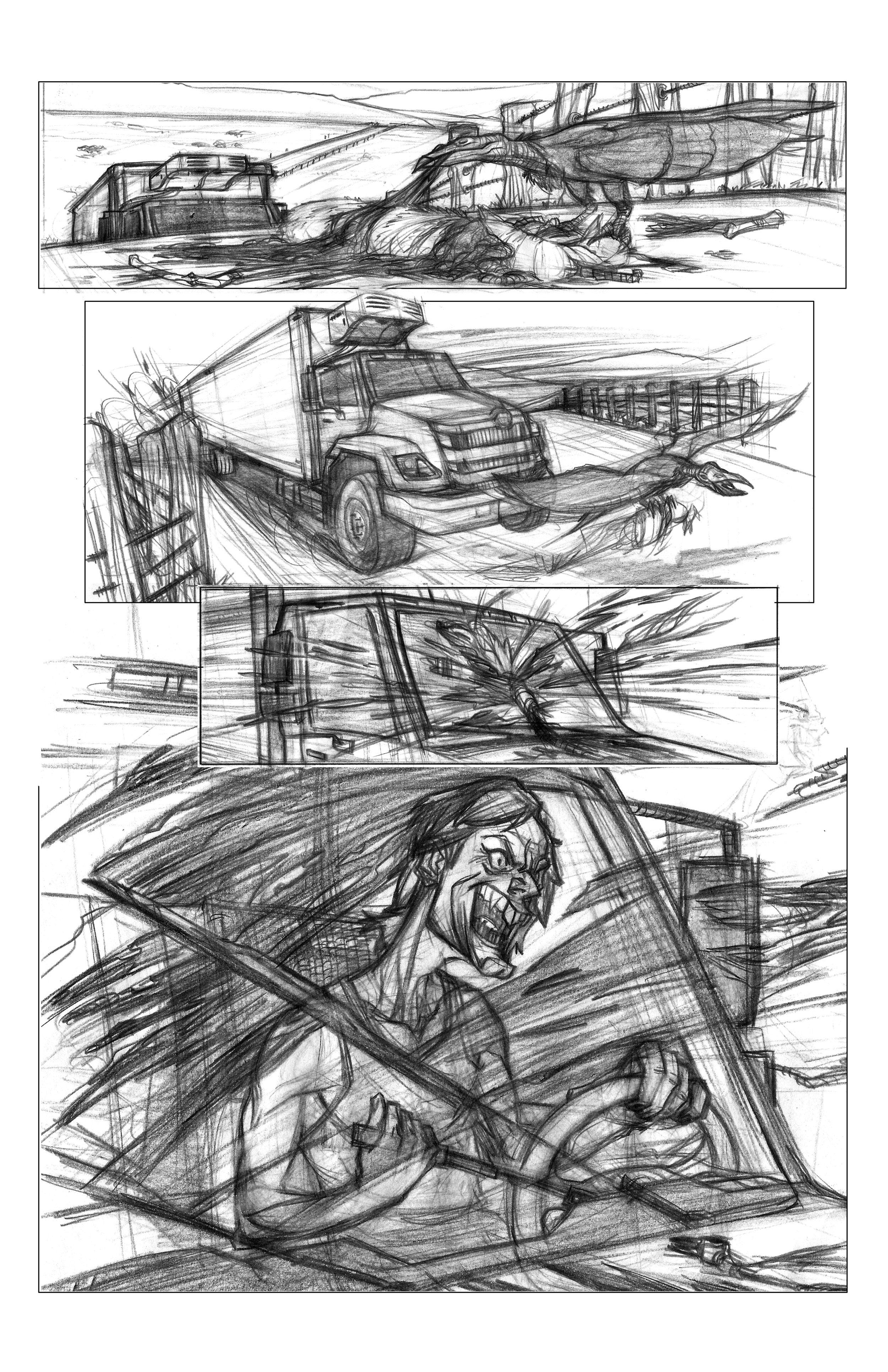In a previous post, I wrote about my ideas for tackling a comic script (Oct 21st's Blog Post). After reading the 24 pages from the Texas Chainsaw Massacre comic script, I'm ready to begin strategizing and executing said comic pages.
Planning ahead with heavy concentrations in Page Layout and Panel Design will lead me to a successful comic page.
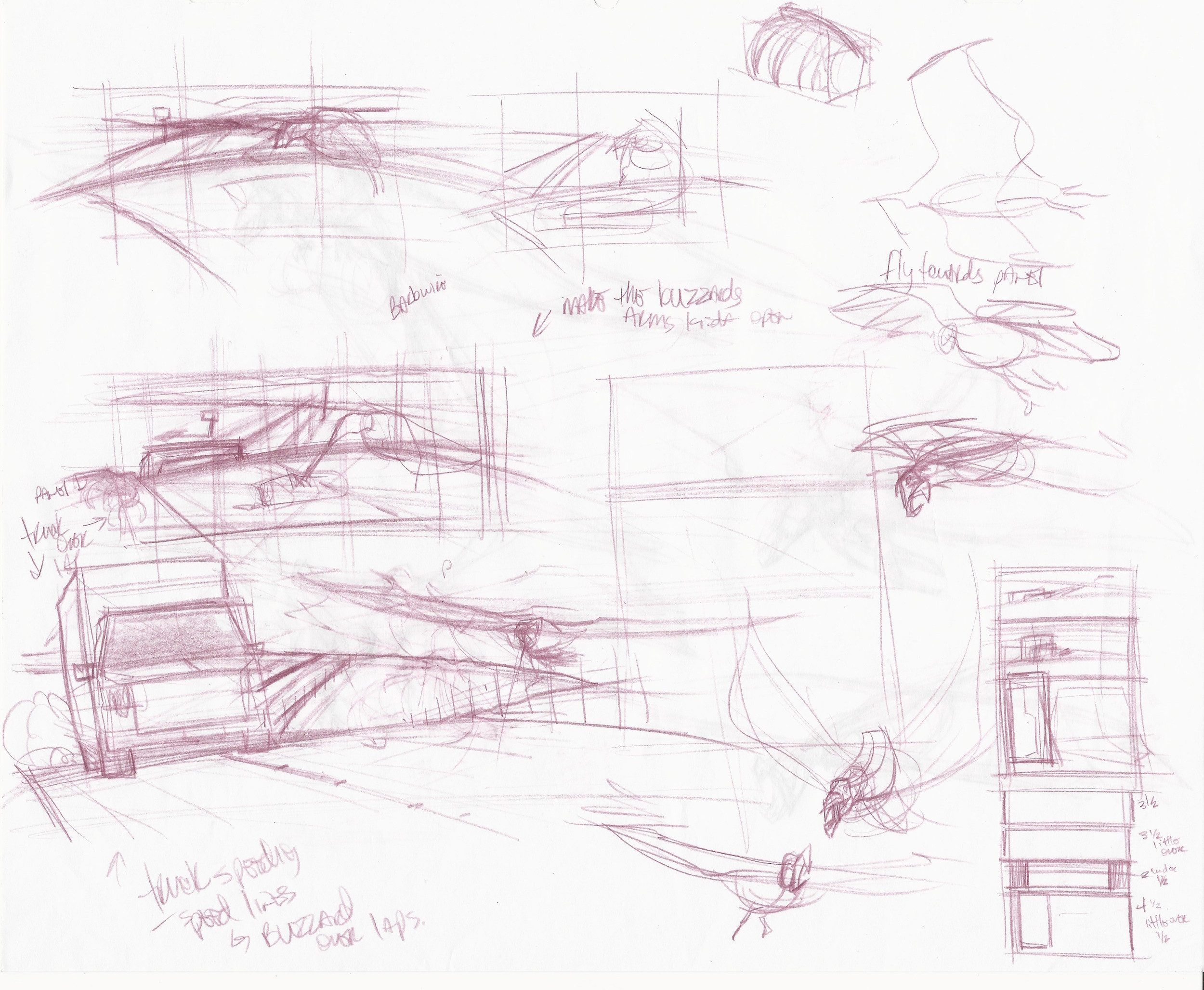
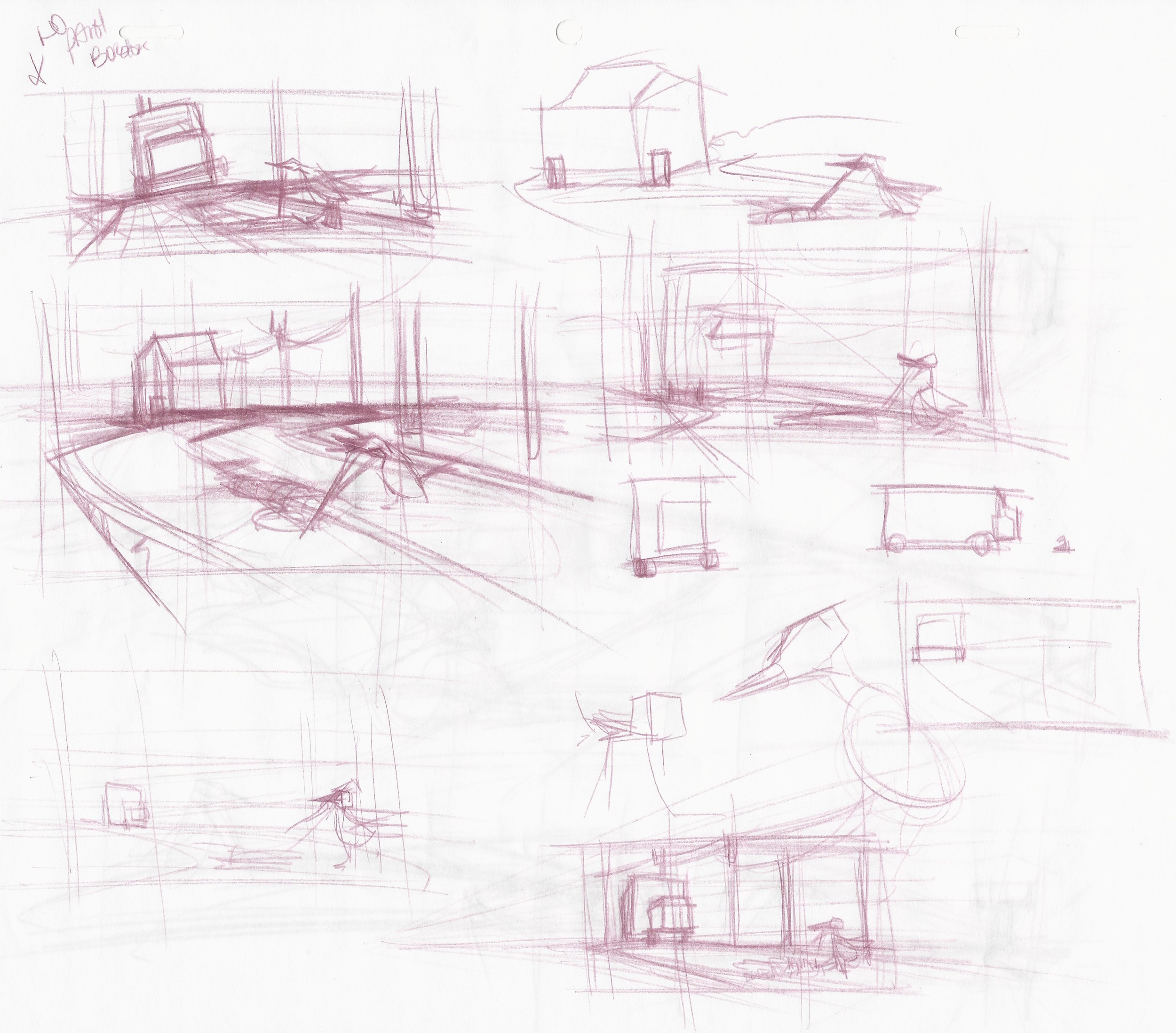
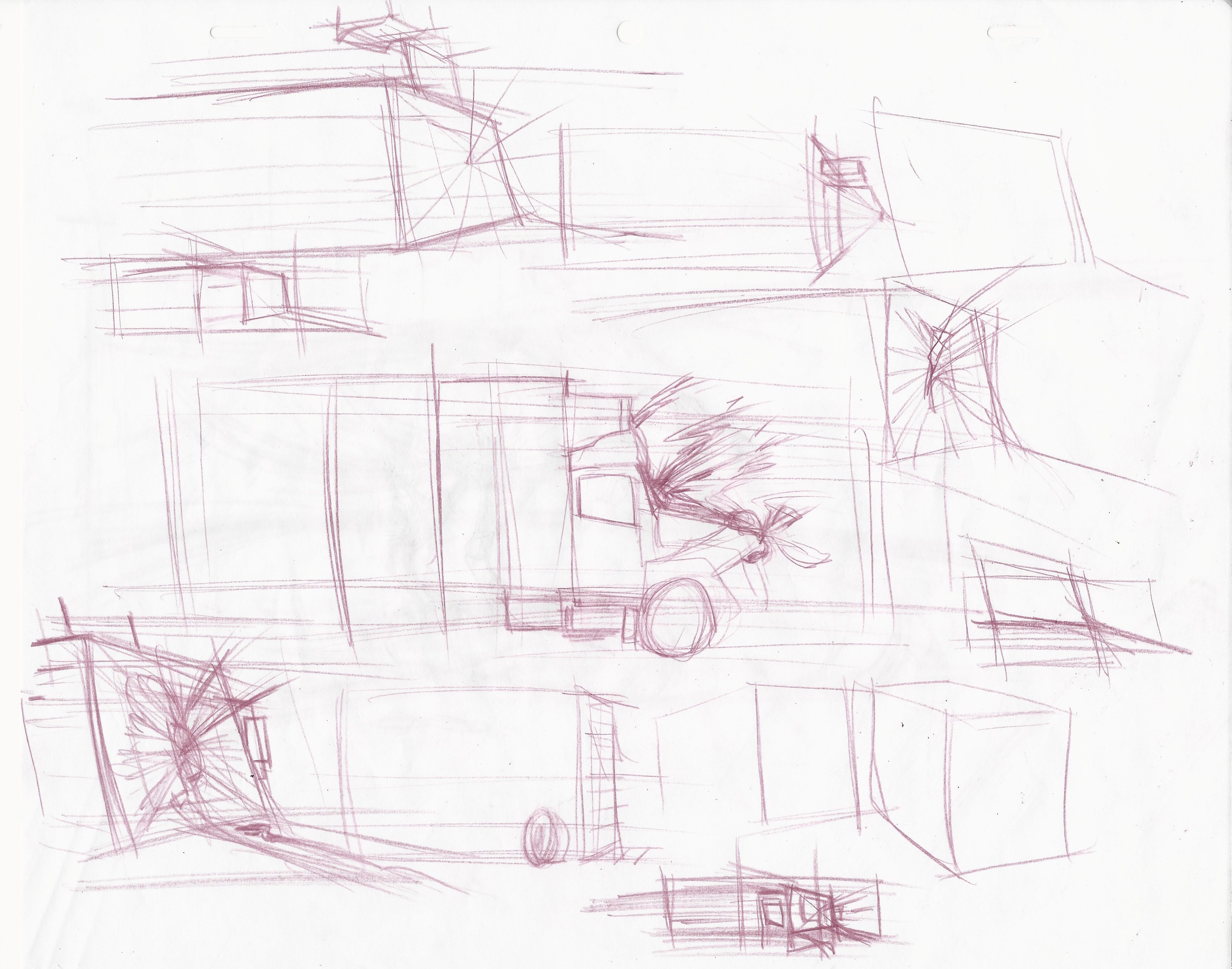
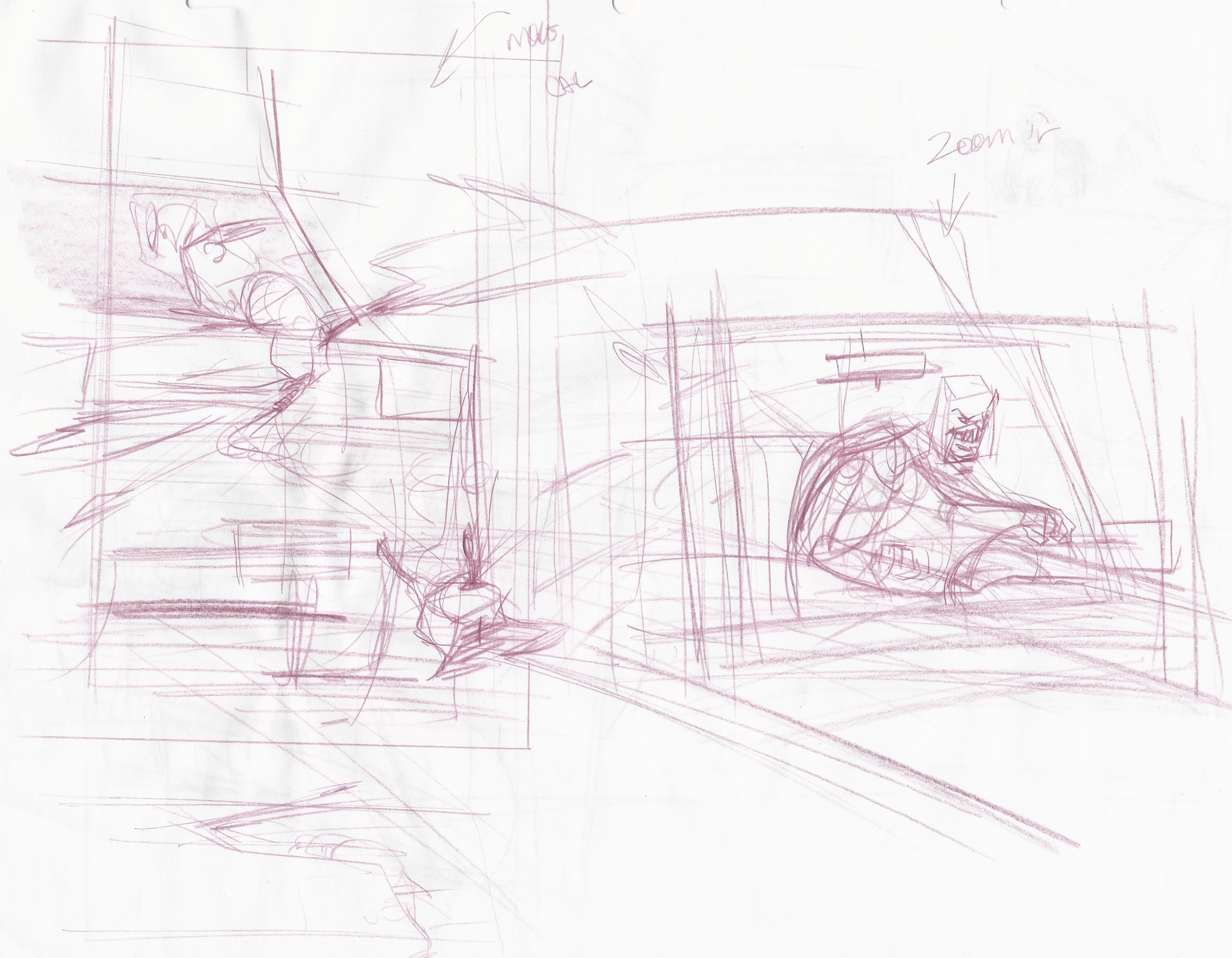
Page Layout:
Being clear and concise with my page layout is crucial. It's important to note the reader will only look at the page for a limited amount of time. My job is to make their experience enjoyable and easy to follow. To find the most effective page layout, I experimented with the following:
- Varying panel sizes and shapes
- Rearranging the panels to benefit the pacing of the action
After I've decided the overall design of the page, I begin to thumbnail each individual comic panel.
Panel Design:
It's important to have clear compositions when designing a comic panel. The storytelling must be seamless. When illustrating a comic panel, I:
- Established all of the information I will use on the page in panel one (1).
- Drew the most important element in the panel first then stage the rest of the props around it.
- Utilized perspective to lead the eye within the panel
- Chose the camera angle and height that best exhibits the clearest view of the action
- Organized characters, environments and props using the Rule of Thirds
Save the Dutch angles and extreme close ups when absolutely necessary. This will give those storytelling decisions more impact if you use them sparingly.
I tend to follow a few rules of thumb when laying out a panel. I:
- Utilize framing to aid in focusing the attention on the important action
- Create one area of focus in the panel
- Limit the amount of weird camera angles
Here is the final pencils of the 1st page from the Texas Chainsaw Massacre.
It's all about clarity. If you are having trouble with drawing a scene using an awkward camera angle, don't draw it. If the angle is difficult to draw, the reader will be equally frustrated with reading it. My advice is to find a simpler camera angle that will clearly stage all of the necessary props and convey your message.
Stay tuned for future posts!
